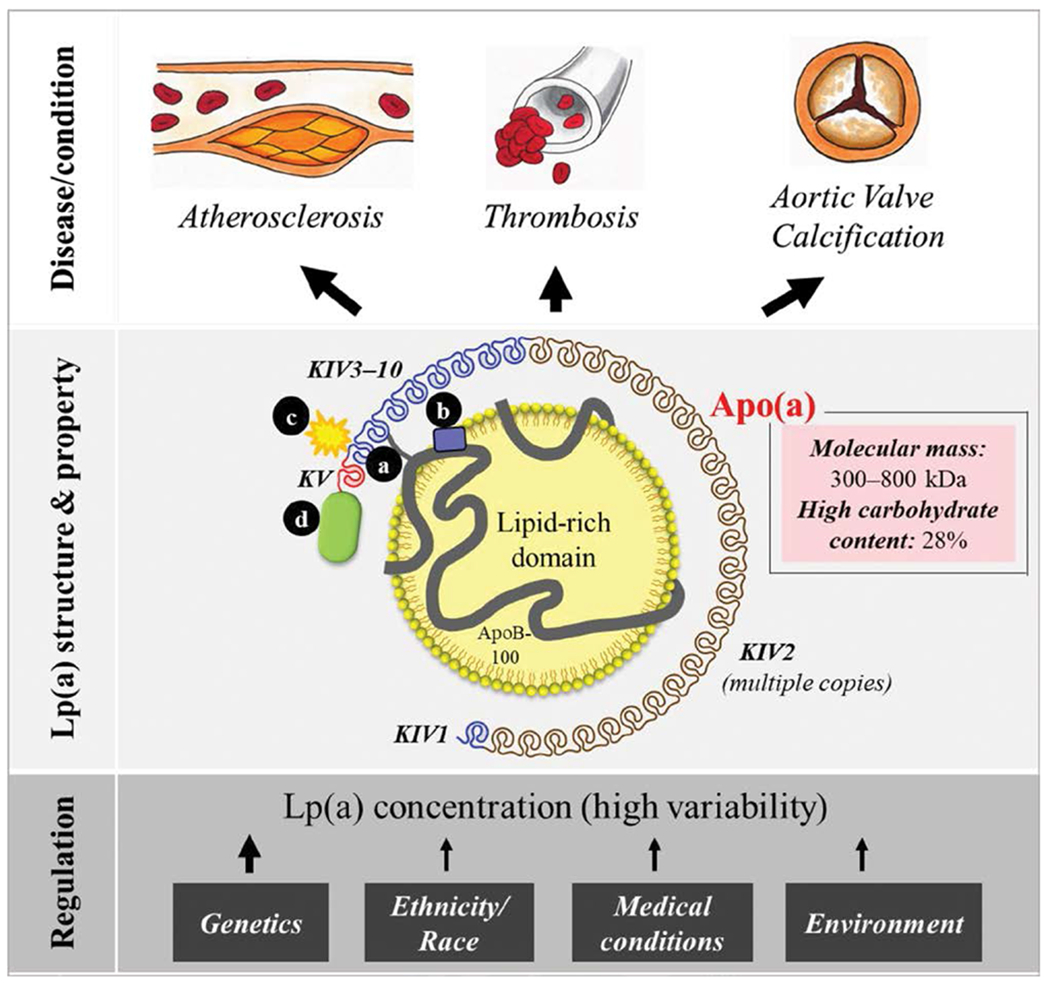Figure. Lp(a) structure, properties, regulation, and relation to disease.

Lipoprotein(a) [Lp(a)] consists of a lipid-rich domain, primarily cholesteryl esters, and apolipoprotein(a) [apo(a)]. Apo(a) binds to apolipoprotein B100 (apoB) via a single disulfide bond (a) at a location close the low-density lipoprotein receptor binding site of apoB (b). Apo(a) contains repeated kringle (K) structures (KIV and KV), comparable with those in plasminogen. There are 10 different subtypes of apo(a) KIV, where type 2 is present in multiple copies, resulting in a highly variable molecular mass (300–800 kDa). Apo(a) is compositionally unique among apolipoproteins with a high carbohydrate content (≈28%). Proinflammatory and proatherogenic oxidized phospholipids bind to apo(a) KIV type 10 (c) and can also be found in the lipid phase. Apo(a) contains a protease domain (d) that lacks enzymatic activity. The Lp(a) concentration is heterogeneous and, to a major extent, controlled by genetics, inversely related to the copy number variation in the LPA gene. Other factors such as ethnicity and race and medical and environmental conditions also play roles in Lp(a) regulation. Lp(a) has been associated with increased risks of atherosclerosis, thrombosis, and aortic valve calcification.
